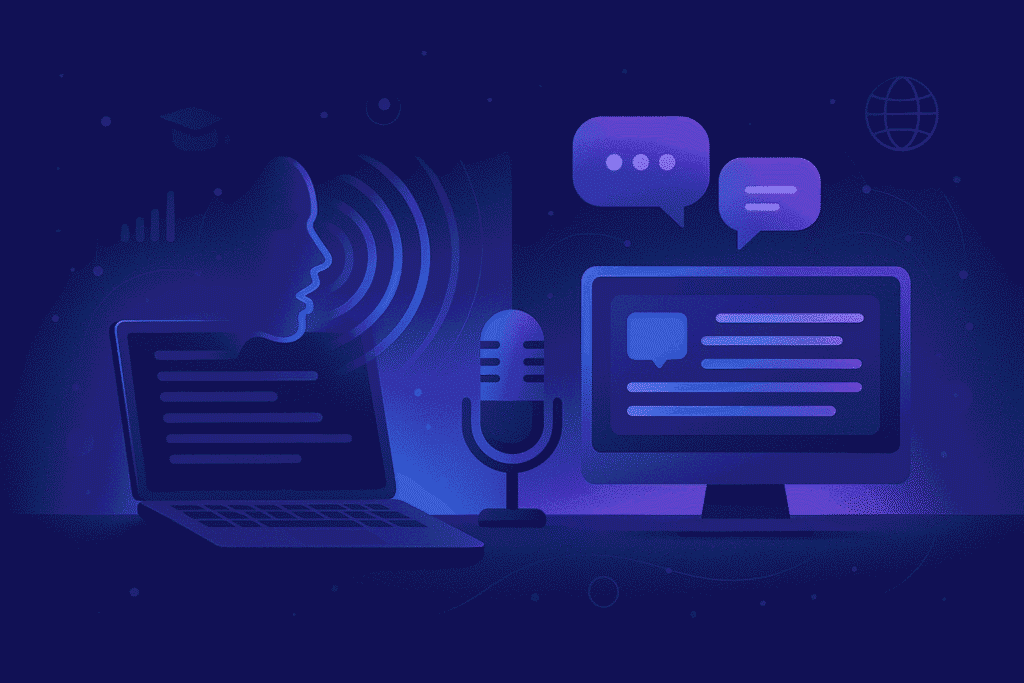In today’s fast-paced digital era, creators are constantly looking for tools that simplify production without compromising on quality. Whether you’re making videos, podcasts, or online tutorials, your voice plays a key role in capturing attention and delivering your message effectively. But not everyone has access to professional recording setups, voice actors, or the time to record and edit high-quality audio. That’s where AI text to speech (TTS) technology steps in, transforming the way creators produce content by giving them an efficient, realistic, and accessible voice solution.
AI text to speech isn’t just a technical innovation; it’s a creative companion that allows anyone to turn written words into expressive, natural-sounding audio. From content creators and educators to marketers and filmmakers, this technology has become a must-have in every creator’s toolkit.
The Rise of AI Text to Speech Technology
AI text to speech technology has evolved far beyond robotic, monotone voices of the past. Modern TTS systems are powered by deep learning and neural networks that mimic human tone, emotion, and rhythm. This enables creators to produce audio that sounds authentic and engaging, often indistinguishable from real human narration.
With the growing demand for audio content in podcasts, explainer videos, and social media clips, creators are relying on TTS tools more than ever before. They can instantly generate high-quality voiceovers in multiple languages and accents, giving them complete creative flexibility.
When platforms like Invideo began supporting free ai text to speech features, the creative process became even more inclusive. Now, anyone from solo creators to small businesses can easily produce videos or audio projects without expensive recording equipment or professional studios. This shift is making high-quality voiceovers accessible to all, helping creators focus on what truly matters: storytelling.
Why AI Text to Speech Is Essential for Modern Creators
1. Streamlines the Content Creation Process
In content creation, time is everything. Whether you’re producing daily social media videos or full-length tutorials, the traditional process of recording, editing, and mixing voiceovers can be time-consuming.
AI text to speech dramatically speeds up this process. By converting written scripts into natural audio in seconds, creators can focus on visuals, storytelling, and post-production rather than spending hours on recording and re-recording lines.
This automation doesn’t just save time, it boosts productivity. Creators can test multiple versions of voiceovers quickly, experimenting with tone and pacing until they find the perfect match for their content.
2. Offers a Cost-Effective Voiceover Solution
Hiring professional voice artists or renting studio time can be costly, especially for creators who produce frequent content. AI text to speech provides a budget-friendly alternative without sacrificing quality.
It enables creators to generate professional-grade voiceovers anytime, anywhere, and at no additional cost once they have access to the tool. This democratizes content production, allowing even small creators or startups to compete with larger production houses in terms of quality and polish.
By investing in TTS tools, creators gain long-term savings and flexibility to experiment with various voices and languages, all while keeping expenses minimal.
3. Enhances Accessibility and Inclusivity
One of the most powerful advantages of AI text to speech is its role in accessibility. For audiences with visual impairments, reading difficulties, or learning disabilities, audio content is often the only way to access information.
TTS allows creators to transform written content, blogs, subtitles, scripts, or e-learning material into spoken words. This not only broadens audience reach but also aligns with global accessibility standards.
For educators, this technology makes lessons more inclusive. For marketers, it ensures that brand messages reach a wider and more diverse audience. In short, AI text to speech ensures no one is left behind.
How AI Text to Speech Improves Creative Output
1. Adds Consistency to Audio Content
Human voiceovers can vary in tone and energy depending on factors like fatigue, mood, or recording environment. With AI-generated speech, consistency is guaranteed.
Every recording sounds just as clear and energetic as the last, maintaining a uniform brand tone across all videos, podcasts, and advertisements. This level of consistency builds audience trust and helps creators maintain a professional sound identity.
2. Multilingual Flexibility for Global Reach
AI text to speech tools often come with support for multiple languages and accents. This is a game-changer for creators aiming to reach international audiences.
Instead of hiring multiple voice actors for different regions, creators can instantly translate and generate localized versions of their content. This enables seamless global marketing, cross-cultural communication, and engagement across borders.
Imagine a YouTuber or podcaster being able to release the same content in English, Spanish, and Hindi all within hours. That’s the power of AI-driven multilingual TTS.
3. Boosts Engagement in Videos and Podcasts
Voiceovers play a huge role in keeping audiences hooked. A good voice can turn an ordinary video into a captivating story.
AI text to speech tools are now equipped with emotion-aware voices that can express excitement, empathy, or seriousness as needed. This emotional realism increases viewer engagement and makes the content feel more relatable.
Whether it’s a product demo, storytelling video, or explainer clip, a realistic AI-generated voice can add personality and emotion that resonates with listeners.
The Role of AI Text to Speech in Different Creative Fields
For YouTubers and Video Creators
For YouTubers, time and consistency are key. AI text to speech allows creators to turn their scripts into engaging voiceovers in minutes, helping them keep up with demanding posting schedules.
It’s also ideal for those uncomfortable recording their own voice, offering a range of voices and tones to match their channel’s style. Many ai video apps now integrate TTS directly, letting creators add narration as part of the video editing process.
For Podcasters and Narrators
Podcasters benefit immensely from TTS technology. Instead of recording lengthy episodes from scratch, they can convert their written content or interviews into audio quickly.
This also allows creators to repurpose blog posts, newsletters, or transcripts into podcast episodes, extending the life of existing content. AI voices ensure professional clarity and tone, even without expensive microphones or soundproof rooms.
For Educators and E-Learning Creators
Online learning has exploded, and educators are constantly seeking ways to make their material engaging. AI text to speech helps teachers, course creators, and e-learning developers add narration to their slides, lessons, and quizzes.
Students learn better through auditory content, and TTS ensures lessons are accessible for those who prefer listening over reading. The ability to switch between voices, languages, and tones makes lessons more dynamic and relatable.
For Marketers and Brands
Marketers use AI text to speech to create voiceovers for ads, explainer videos, and social media clips. This ensures fast content turnaround and consistent brand messaging.
It’s especially useful for creating voice variations during A/B testing of marketing campaigns. Different voices can be tested to see which tone resonates best with specific audiences — all without costly re-recording sessions.
The Future of AI Text to Speech in Content Creation
The future of AI text to speech looks promising as the technology becomes more lifelike and integrated into creative ecosystems. We’re seeing advances like real-time voice generation, voice cloning for personalized branding, and integration with other AI tools like video editors, animation software, and ai video apps.
As these technologies converge, creators will be able to generate complete multimedia experiences from script to sound to visuals entirely within AI-powered environments. This not only redefines efficiency but also expands the creative possibilities available to individuals and teams.
Best Practices for Using AI Text to Speech
To make the most of AI text to speech, creators should keep a few practices in mind:
- Write conversational scripts: Since AI reads exactly what’s written, using natural language and short sentences improves realism.
- Experiment with tone: Try different voice styles — cheerful, serious, or calm — depending on your content’s emotion.
- Match audio with visuals: Syncing the narration perfectly with visuals enhances engagement and flow.
- Use pauses effectively: Adding punctuation and spacing helps the AI deliver speech with better rhythm and clarity.
- Preview before publishing: Always listen to your generated audio before finalizing to ensure it matches your vision.
Conclusion
AI text to speech is no longer a futuristic concept; it’s an essential tool that empowers creators to produce professional, engaging, and inclusive content effortlessly. From saving time and costs to enhancing accessibility and engagement, the advantages are undeniable.
As the technology continues to evolve, the line between human and AI-generated voices will only blur further. For today’s creators, adopting AI text to speech isn’t just about convenience; it’s about staying ahead in an increasingly competitive digital landscape.
Whether you’re an educator, marketer, YouTuber, or storyteller, AI text to speech gives you the power to bring your words to life faster, smarter, and more creatively than ever before.

